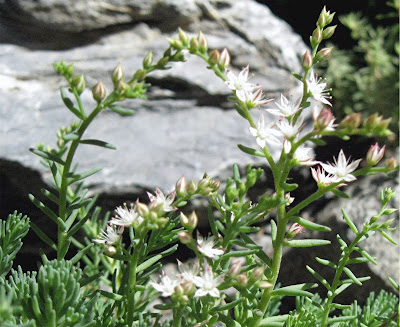
If you add the Panicum in the background that totals three natives as opposed to the two non-native, the dwarf Crape Myrtle and the Erica x darleyensis. All the plants are pleasant and easy in this well-drained sunny site. The Elephantopus seeds enthusiastically so it is perhaps more of a challenge than some gardeners are interested in. The Ruellia, however is a wonderful plant. It seeds about some but individual plants come and go a rate that allows for a relatively constant number of plants though the locations change. I've occasionally wondered whether this is the "single wild petunia" that Henry Mitchell rhapsodized about. Probably not; he was a consummate plantsman.
Wandering plants are an element in the traditional definition of a Cottage Garden. My garden here in Adelphi, is occasionally labeled a Cottage Garden by visitors. I understand their point-of-view, but question their conclusion. We do have a lot of roses, vines, and ambulatory/reseeding plants arranged in what can only charitably be called a cluttered design. Still....I think there is too much emphasis on leaf texture and color and not enough on floral effect to actually be a Cottage Garden. Of course it's the same garden whatever you call it!








